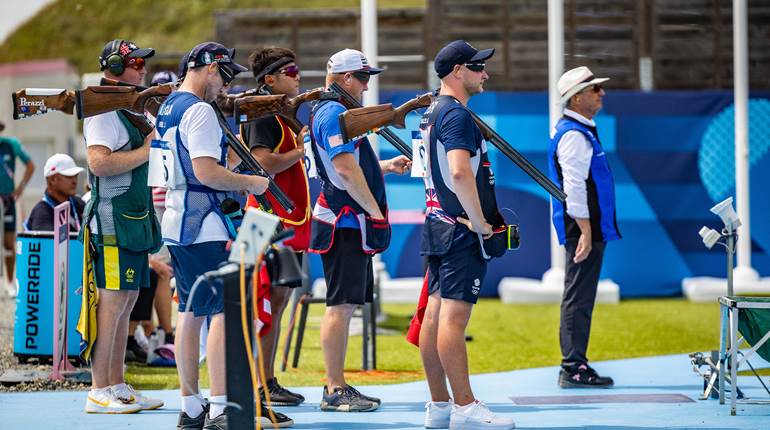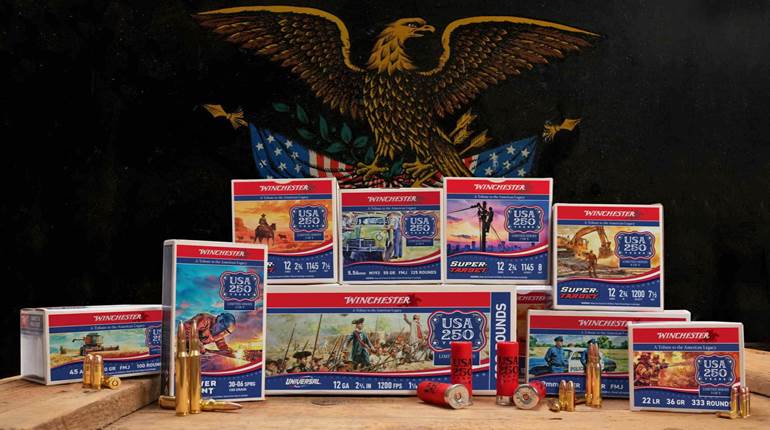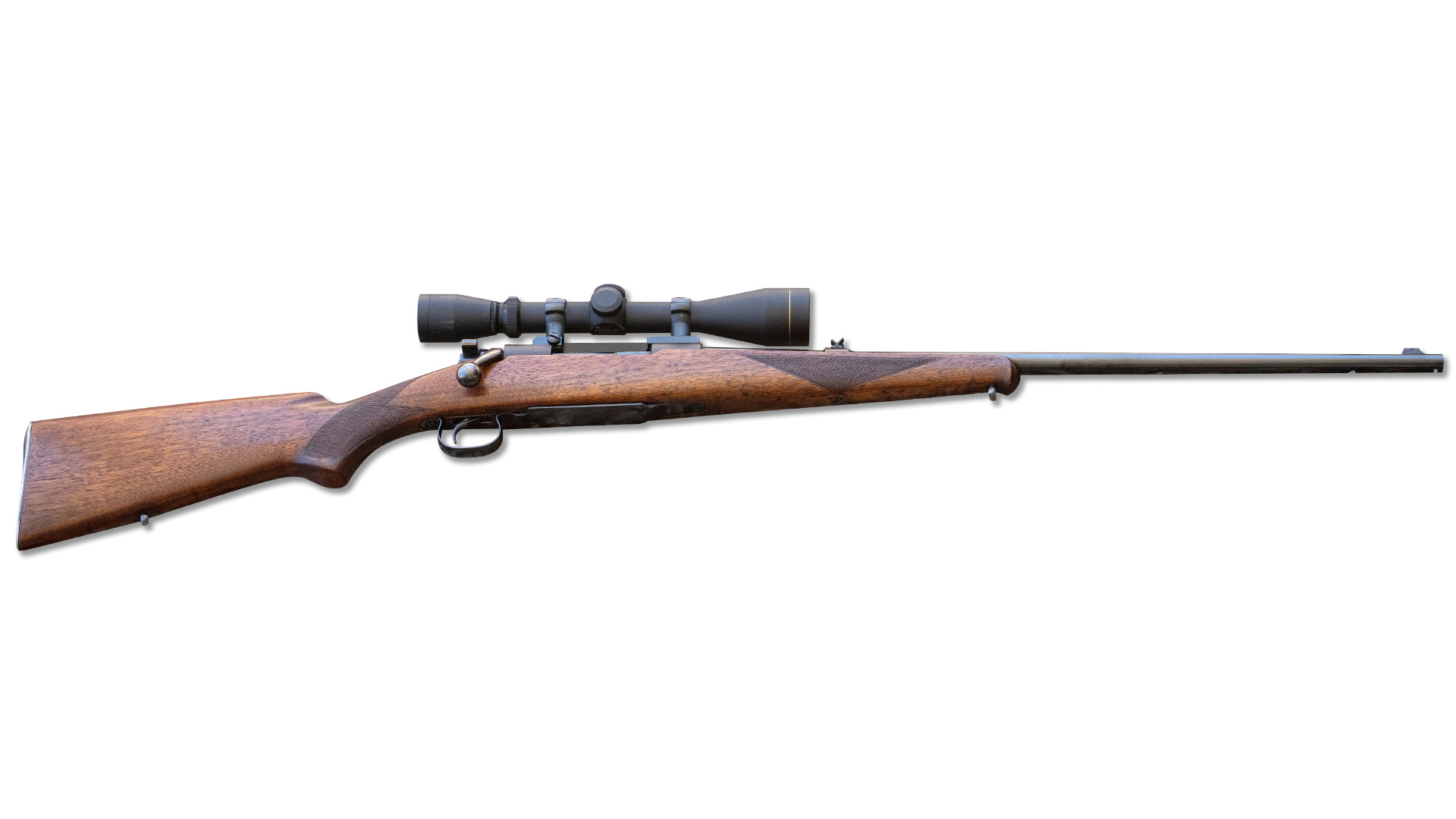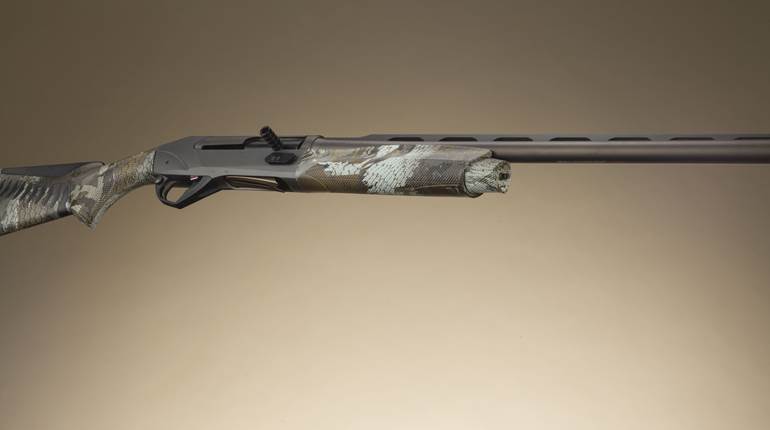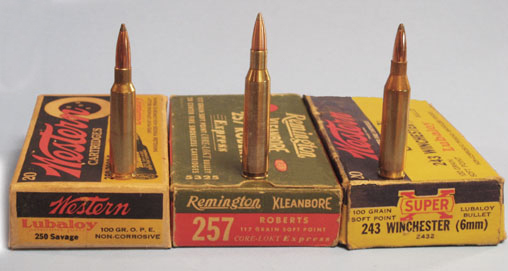
While the number of commercial center-fire rifle cartridges continues to grow, the line-up of the most popular ones, chambered by just about every manufacturer, has remained static since the 1960s. That list includes the .223 Rem., the .22-.250 Rem., the .243 Win., the .270 Win., the 7 mm Rem. Mag., the .308 Win., the .30-’06 Sprg. and the .300 Win. Mag.
With one exception, the cartridges on the list fall into three categories: ancient standbys that never allowed another other cartridge to play in their house (the .270 Win.); commercial consolidations of old ideas (the .22-.250 Rem., 7 mm Rem. Mag. and .300 Win. Mag.); or ex-military numbers that work darn well for sporting purposes (the .223 Rem., .308 Win. and .30-’06 Sprg.). The .243 Win. is none of the above.
Before the .243 Winchester’s appearance in 1955, the niche of “varmint/deer cartridge” was filled by the .250 Savage and .257 Roberts. They will do anything the .243 can, plus shoot bullets up to 120 grains, rather than the 105 grains or so possible with the .243. Those 15 grains of bullet weight are why daring rifle manufacturers sometimes still chamber the .250 Savage or .257 Roberts, at least for now. It doesn’t take long to fill the limited demand of geezers and obsessive-compulsives. The typical shooter just buys a .243 Win. rifle.
This is true from America to Africa. I’ve seen .243s in the hands of Inuits in the Arctic—who carry one as their “big” rifle when after polar bear and the larger seals—and South African biltong hunters, those who cull antelope from springbok to kudu for the commercial jerky market. In my native Montana the .243 Win. is the number-one choice for a first big-game rifle, the cartridge kids use on pronghorn and deer (and sometimes elk) before they matriculate to really “big” ones such as the .270 Win.
I have a soft spot for the .243 Win., since the little cartridge cured a cringing flinch caused by the aluminum buttplate on a Savage 99 chambered for the “mild” .308 Win. As John Wayne observed about Glenn Campbell’s Sharps in “True Grit,” that 99 was “too much gun” for a skinny 14-year-old. A few years later a .243 Win. finally put the flinch to rest.
Still, the only reason the .243 Win. made the list is because of Warren Page, the long-time shooting columnist for Field & Stream magazine. Page went on a 6 mm binge in the early 1950s, using his .24-cal. wildcats to kill many game animals worldwide. Afterward he wrote about how the 6 mms simply worked better than those plodding, old .25s.
There were far fewer hunting and shooting magazines in those days, and Field & Stream was the biggest. A lot of people bought Page’s line, including some decision-makers at Remington and Winchester. In 1955 Remington introduced the .244 and Winchester the .243.
The .244 Rem. was essentially the .257 Roberts necked down, and the .243 Win. was the .308 Win. necked down. The .244 featured a 75-grain bullet at 3,500 fps and a 90-grain bullet at 3,200 fps, while the .243 featured an 80-grain bullet at 3,500 fps and a 100-grain at 3,070 fps. They were like fraternal twins who graduated from different high schools.
The .243 Win. soon took the lead in the battle of the 6 mms. Most theorists suggested this was due to the 90-grain “heavy” bullet of the .244. As so many claimed they “knew,” bullets weighing less than 100 grains didn’t work on deer. (Some real old-timers claimed the original 87-grain load for the .250 Savage worked like a death-ray.)
Consequently, in the early 1960s Remington changed the .244’s name to the 6 mm Rem. and started loading a 100-grain bullet at a reported 3,190 fps, more than 100 fps faster than the 100-grain, .243 Win. The 6 mm Rem. sold well at first, partly because Remington had just revamped its homely Model 721/722 rifle into the modern Model 700.
Shortly thereafter Winchester reworked the Model 70, and many shooters didn’t like it. Even then the .243 Win. had such a big head-start that the 6 mm Rem. never could catch up. Today almost nobody chambers the 6 mm Rem., while its counterpart is a world standard.
An unfortunate aspect of the modern capitalistic system is that the best dog doesn’t always win. Sometimes it’s the dog with the best marketing strategy, whether deliberate or accidental. The entire 6 mm phenomenon of the 1950s displaced two perfectly fine .25-cal. cartridges—and then, according to many experts, the wrong .24 cal. won.
To those men who obsess over microscopic details, the 6 mm Rem. is plainly superior to the .243 Win. The 6 mm Rem. holds about two grains more propellant and has a longer neck and sharper shoulder, all considered advantages in the nit-picky world of cartridge design.
The deficiencies of the .243 Win.’s sloping shoulder and short neck are real. My first .243 Win. was a cross-breed of the .24 wars, a Remington Model 700 BDL. Not long after I started handloading for the 700, my reloads started showing signs of pressure-distress, despite my using a load that worked fine at first. Eventually I traced the cause to the case necks thickening through several loadings and cured it with an inside-neck reamer. This happens quite a bit with .243 Win. brass, but isn’t a problem in the 6 mm Rem.
Eventually many laboratory ballisticians also found the .243 Win. to be somewhat quirky, a discovery made when the industry started switching from copper-crusher to piezoelectric pressure-testing equipment during the 1970s and ’80s. Copper-crusher testing provides only a maximum pressure, though other information can be extrapolated from the result. Piezoelectric equipment provides a moment-by-moment look at the pressure curve.
Piezoelectric testing revealed that certain cartridges and loads resulted in rather strange pressure curves, often with unexpected detours. The .243 Win. was one of these oddballs. I’ve visited several ballistics labs and interviewed their technicians through the years. Many have volunteered information about the cartridge’s quirkiness, particularly with bullets in the 100-grain range, and especially after the chamber throat gets slightly worn.
During this same period, test-barrels were shortened. For decades the standard length was 26 inches, but by the 1960s few commercial rifles had barrels that long—and the trend was downward. Both the .243’s pressure quirks and shorter barrels resulted in a severe drop in the listed muzzle velocity of the 100-grain factory load, from 3,070 fps in 1955 to 2,960 fps. in 1980, both chronographed from a 24-inch barrel.
Since most .243 Wins. now have 22-inch barrels, factory loads usually chronograph around 2,900 fps. This is slower than the 100-grain factory load in the 6 mm Rem., the same velocity as the (now dead) 100-grain, .257 Roberts factory load, and almost as slow as 100-grain, .250 Savage factory loads. The Wonder Cartridge that supplanted the .25s now has essentially the same ballistics.
None of this is obvious to the average shooter, and it shouldn’t be. Even those handloaders sensitive to every nuance of a brass case can’t perceive the pressure quirks that piezoelectric pressure machines pick up. And there’s really no difference in how the .243 Win., 6 mm Rem., .250 Savage and .257 Roberts kill varmints or deer. Some might argue the point. Go ahead, talk to a sheet of paper—but I’ve taken dozens of deer with those four cartridges. As a result, the .243 Win. continues blithely onward, the hottest-selling factory cartridge between the .22-.250 Rem. and .270 Win.
Of course, because of a chronic case of rifle disease, I sold my Remington 700 in .243 Win. almost 30 years ago. Since then there have been three 6 mm Rem. rifles: a Remington Model 700 ADL, a Ruger M77, and (presently) a Thompson/Center Encore rifle barrel. This purist switch to the 6 mm has mostly ensured that new cartridge cases are often hard to find—big deal. Handloaders revel in such problems. The search for brass—especially in a popular sporting goods store—demonstrates that they own a rifle in a superior chambering, even if there’s no perceptible difference in field performance.
Five years after the .244 Rem. became the 6 mm Rem., the inevitable happened: Roy Weatherby introduced an even more powerful .24 cal. In those naïve days a magnum had to have a belted case, or it wasn’t really a magnum. (This was long before modern shooters discovered that a brass belt was as senseless as suspenders on a kangaroo.) So Roy devised a sort of belted .30-’06 Sprg. case, complete with the double-radius Weatherby shoulder, and there stood the .240 Wby. Mag.
The .240 Wby. Mag.’s case is about long as a .30-’06 Sprg. case and has the same diameter rim, but the belt reduces case capacity. In my measurements of fired brass, the .240 Wby. Mag. holds about 5 fewer grains of propellant than the .25-’06 Rem. So no, the .240 is not a belted 6 mm-’06.
Today there are five factory loads, ranging from an 87-grain soft-point at 3,523 fps to a pair of 100-grain loads at 3,411 fps. These loads are chronographed in a 26-inch barrel, which used to be the standard Weatherby factory barrel length. However, today the Weatherby website lists only .240s with 24-inch barrels, though no doubt a 26 inch could be ordered from the Custom Shop.
For the past three years my wife, Eileen, and I have been shooting a Weatherby Ultra Lightweight Mark V in .240 Wby. Mag., and in this rifle the 100-grain Nosler Partition factory load chronographs around 3,300 fps. This is still quite respectable, and the factory ammunition is very accurate, with three-shot groups at 100 yards. averaging 0.60 inches, center to center. The load has taken a number of mule deer.
The fastest 100-grain, .25-’06 Rem. handloading data in any current manual comes from Alliant: 52.6 grains of Reloder 22 for 3,400 fps. There is no way the .240—with 8 percent less propellant space, and pushing a skinnier bullet—can match that velocity from a standard 24-inch barrel. This claim is supported by the same handloading manuals.
There’s nothing wrong with a 100-grain bullet at 3,300 fps, but today we have several “premium” 6 mm bullets weighing 85 to 95 grains. These easily reach the 3,400 fps range, and despite not weighing the traditional 100 grains, they will take big game handily.
A couple years ago Eileen field-tested the then-new 90-grain Nosler E-Tip. We received a sample box of bullets in early autumn, and I quickly worked up some loads. Ramshot Magnum propellant worked best, grouping three shots into around ¾ inches at 100 yards at 3,375 fps. The first field test was on a doe pronghorn at 311 yards., according to a Leica rangefinder. It stood quartering toward us, and the first shot broke the big shoulder joint. The doe staggered but didn’t go down, so Eileen put another bullet through the ribs broadside, and that was that. Both bullets exited, but the penetration of the first bullet was most impressive, because of the bone encountered on an angled shot. This load also shoots very flatly: When sighted in 2-inch high at 100 yards, the E-Tip lands only 2-inches below the point of aim at 300 yards.
The 85-grain Barnes Triple-Shock X-Bullet, 85-grain Nosler Partition, 90-grain Swift Sirocco II, and 95-grain Nosler Partition will also work fine on lighter big game in the .240 Wby. Mag. In the 6 mm Rem., any of the heavier conventional bullets will also do the job, but there’s also no harm in using a premium bullet, especially if hunting northern deer or even bigger game. This is heresy to many hunters, but I know quite a few people who have killed caribou, elk and even polar bears with 6 mm rifles, usually with one shot.
What about the 50-year-old concept of the 6 mms as varmint rounds? Today probably 98 percent of .243 Wins., 6 mm Rems. and (especially) .240 Wby. Mags. are strictly used on big game. A few .243s and 6 mms do show up on prairie dog towns, but these are normally heavy-barreled specialty rifles, not the light sporters Warren Page promoted. The reason? Most shooters have found that a light 6 mm is not only a pain in the shoulder after a couple hundred rounds, but also loud. This doesn’t mean much to our well-protected ears, but the report often drives prairie dogs underground quickly. It would also take an affluent prairie dogger to put together a collection of 1,000 rounds of .240 Wby. Mag. brass.
Another factor is that when modern, plastic-tipped varmint bullets are combined with riflescopes with multi-point reticles, the range of smaller varmint rounds is greatly extended. A .223 Rem. is a viable 500-yard prairie dog cartridge today, a distance that used to belong to larger cartridges. Thus the real role of the 6 mms today is mostly on larger varmints, from ’chucks up to coyotes. According to some of my Canadian and Alaskan friends, 6 mms are also apparently fine wolf rifles.
With the popularity of the .243 Win. there’s really no reason for the 6 mm Rem.—except that it’s such a well-designed cartridge. The .240 Wby. Mag. has noticeably more zip than either the .243 or 6 mm, yet recoil is still so mild that almost anybody can shoot one well, even in a rifle like the Weatherby Ultra Lightweight Mark V, which weighs about 6 pounds, 8 ounces with a typical 3-9X scope. With modern bullets, it turns out that either of the “other 6 mms” is also a great cartridge for our larger varmints and smaller big game, too.












